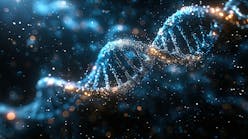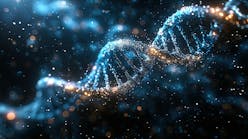A University of South Dakota (USD) chemistry major now has experience doing research on jumping genes at South Dakota State University (SDSU), thanks to a research fellowship program. Jumping genes are DNA segments that are able to replicate and paste themselves into a new position on the same or another chromosome.
This summer, Heather Collazo worked with associate professor Wenfeng An of the SDSU Department of Pharmaceutical Sciences. An and his team are studying how aging affects the regulation of a particular type of jumping gene, known as L1, within body and reproductive cells.
The Future Agriculture and Science Taskforce Research and Extension Experiences for Undergraduates program provides qualifying students a 10-week university laboratory experience the first summer, followed by an industry internship the second summer. Students receive a $6,000 summer stipend through the program, which is in its second year. The program is supported by a four-year, nearly $280,000 U.S. Department of Agriculture grant through the National Institute of Food and Agriculture.
“Heather came into the FAST REEU program with an excellent knowledge of chemistry and an interest in biochemistry. She was up for the challenge of working on cutting-edge genetic research in Dr. An’s laboratory,” said FAST REEU program coordinator Madhav Nepal, an associate professor of biology and microbiology at SDSU.
Collazo, who is an enrolled member of the Navajo nation, was born in Santa Fe, New Mexico, and her family moved to Aberdeen when she was five years old.
The first task was to train Collazo to extract genomic DNA from tissues. Initially, she practiced on control samples, learning to “produce high-quality, reproducible results and get a good yield of genomic DNA from those samples,” An said. Then Collazo began working with the experiment samples from reproductive cells. By the end of July, she had extracted genomic DNA from approximately 260 tissue samples.
The second aspect used digital droplet polymerase chain reaction, or ddPCR, which quantifies the frequency of the L1 insertions. After completing this step, Collazo analyzed the data. She presented her findings at the research team’s weekly lab meeting as well as at a joint poster session for all REEU projects. She will be one of the authors when the results are published in the future.




